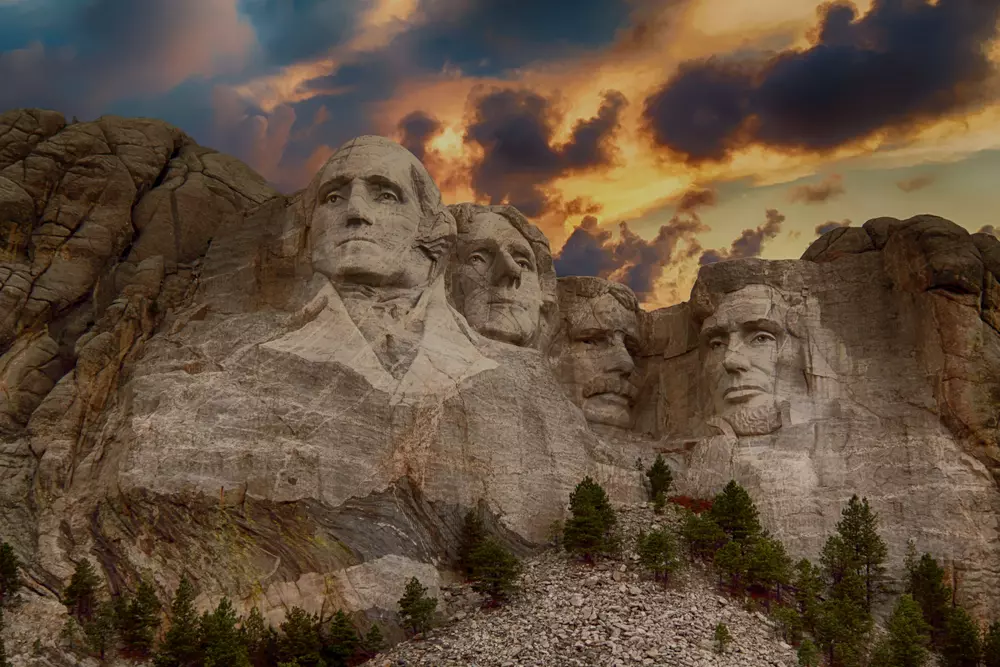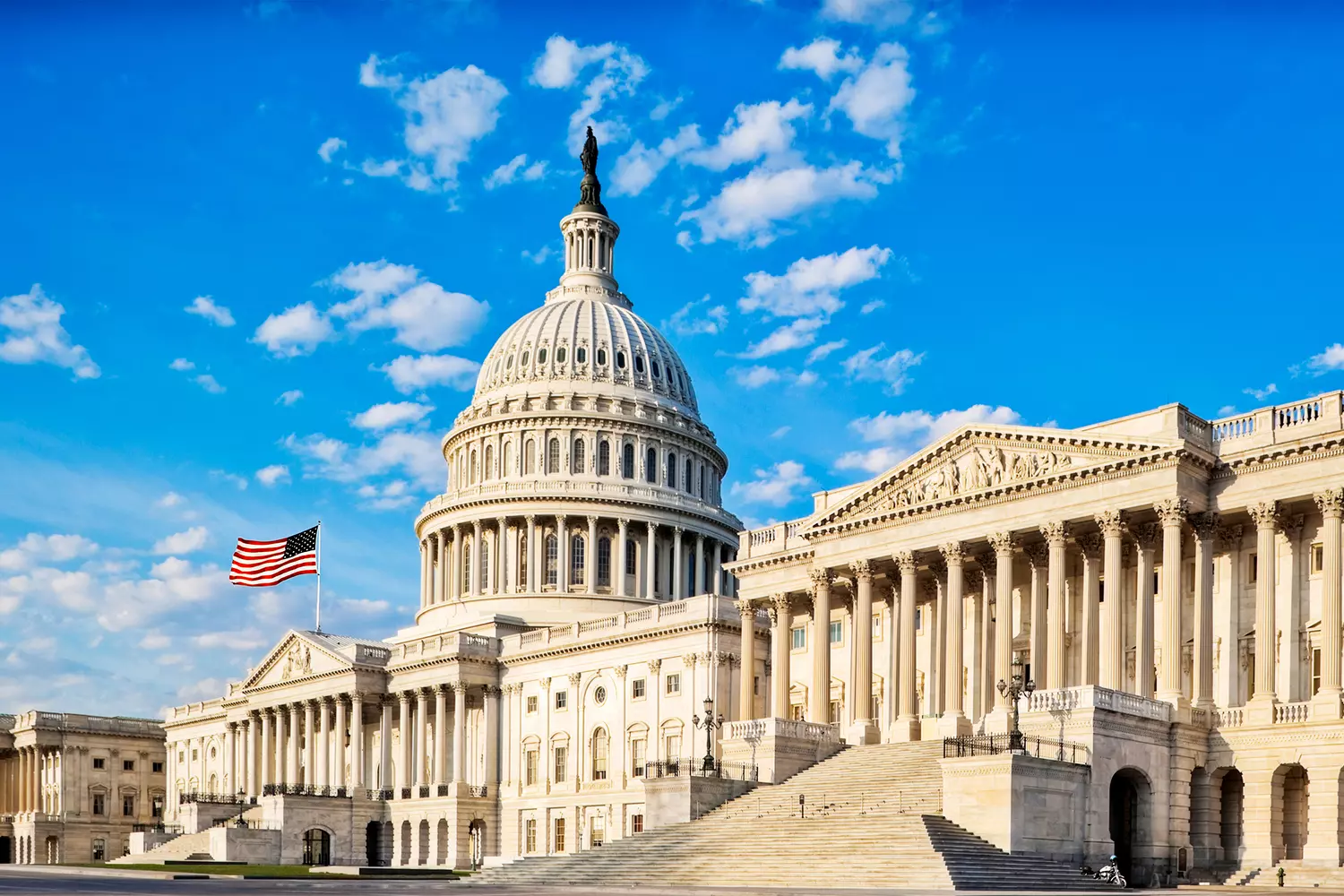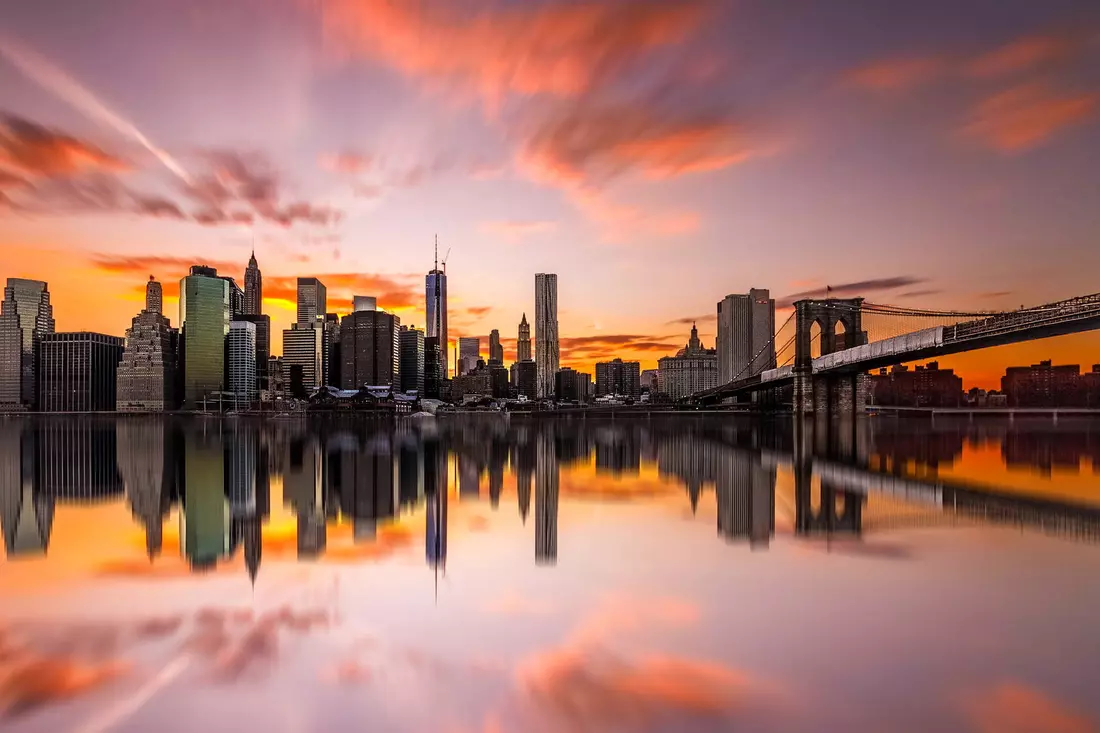New England comprises six states in the northeastern United States, serving as the cradle of the American nation. It was here that the first European settlements emerged, the revolution for independence took root, and a unique culture blossomed. This region beckons travelers with its picturesque landscapes, charming towns, historical landmarks, and rich culinary traditions.
Origins, Distinctive Features, and Spirit of the Region
New England is not merely a geographical area but a vibrant tapestry of cultures and landscapes. Here, amidst the verdant hills of Vermont and the rugged shores of Maine, everyone can find something to cherish. History enthusiasts can stroll along the cobblestone streets of Boston, where every stone whispers tales of the past, while gourmets can savor the freshest seafood in quaint fishing villages. In autumn, the region transforms into a canvas of gold and crimson hues, attracting artists and photographers from around the globe. And in winter, New England's ski resorts offer excellent conditions for outdoor recreation.
Where Did the Name New England Come From?
The name originated in the early 17th century when the first colonists, arriving from England, began to settle the new lands. In 1616, English navigator John Smith, who explored the region, suggested naming it "New England" to emphasize its connection to the homeland. This name soon gained traction, and by 1620, the Puritans landed on the coast of Massachusetts, establishing the first permanent settlement.
Despite the passage of centuries, the influence of English traditions is still palpable here—in architecture, the legal system, educational institutions, and even the lifestyle of the locals.
What Unites the States of New England?
While each state is unique, they share common traits:
- Historical Heritage: ancient towns, universities, museums, and monuments from the colonial era.
- Nature and the Changing Seasons: forests, mountains, scenic coastlines, and distinct seasons, especially the renowned autumn.
- Maritime Culture: fishing villages, sailing regattas, lighthouses, and a love for fresh seafood.
- Education and Science: Harvard, Yale, MIT, and other leading educational institutions in the world.
- Culinary Traditions: maple syrup, lobsters, clams, and hearty stews, with recipes passed down through generations.
This region is not just a geographical union of several states but a place with a unique atmosphere where old traditions coexist with modern life.
Historic Towns and Architecture
New England's towns have preserved the appearance of the colonial era. Narrow streets, ancient churches, brick mansions, and the buildings of the first universities create an atmosphere where it's easy to imagine the birth of the United States.
Boston: The Heart of American History
Boston is known as the cradle of the American Revolution. Here, you can walk the Freedom Trail, a route that leads through 16 historic sites, including the Old North Church and the Paul Revere House. The city is also home to Harvard University, founded in 1636, as well as the oldest public park in the country, Boston Common.
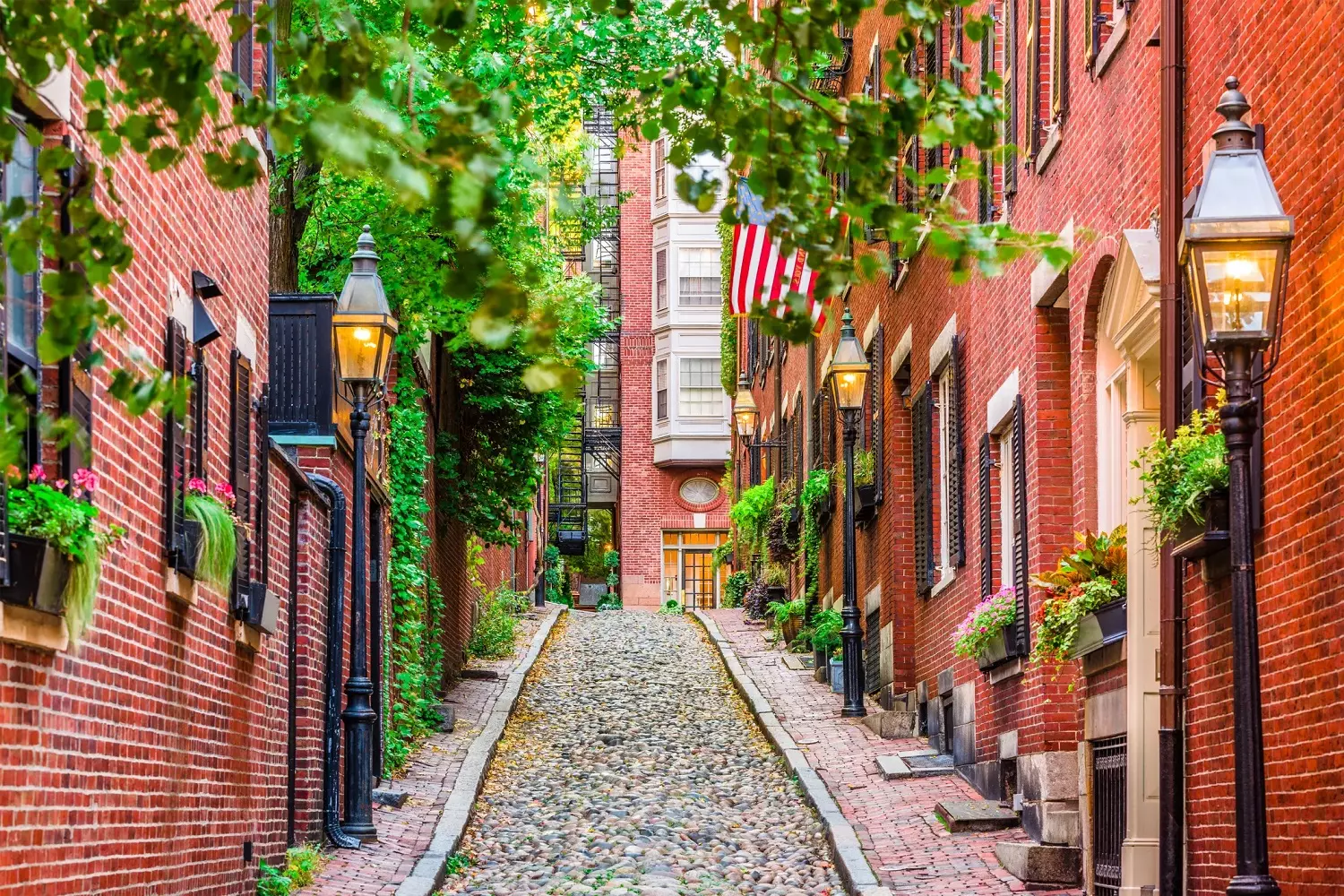
Providence and the Legacy of the First Settlers
The capital of Rhode Island is known for its colonial and Victorian architecture. In the Federal Hill district, 17th-century houses have been preserved, and on the campus of Brown University, you can see buildings constructed according to 18th-century British canons. Providence is especially beautiful in the evening when the lights of the WaterFire festival illuminate the river.
New Haven: A City of Science and Tradition
This city in Connecticut is famous for Yale University. The university campus resembles the old quarters of London — stone facades with Gothic elements, massive doors, and stained glass windows. In the city library, you can see rare books, including original manuscripts of the first American writers.
Salem: A Place with a Dark Past
Salem, Massachusetts, is known for the events of the late 17th century when the witch trials took place. Today, the city attracts tourists with museums and houses from that era. Several buildings where interrogations were held have been preserved in the center, and monuments to the victims of the trials stand in the streets.
Portland and the Spirit of New England
Portland, Maine, is a city with cozy waterfronts, red brick houses, and small lighthouses. The central part of the city resembles an old 19th-century port quarter, where fish shops and artisan shops still operate.
New England carefully preserves its history. Each city in this region tells of events that influenced the entire country.
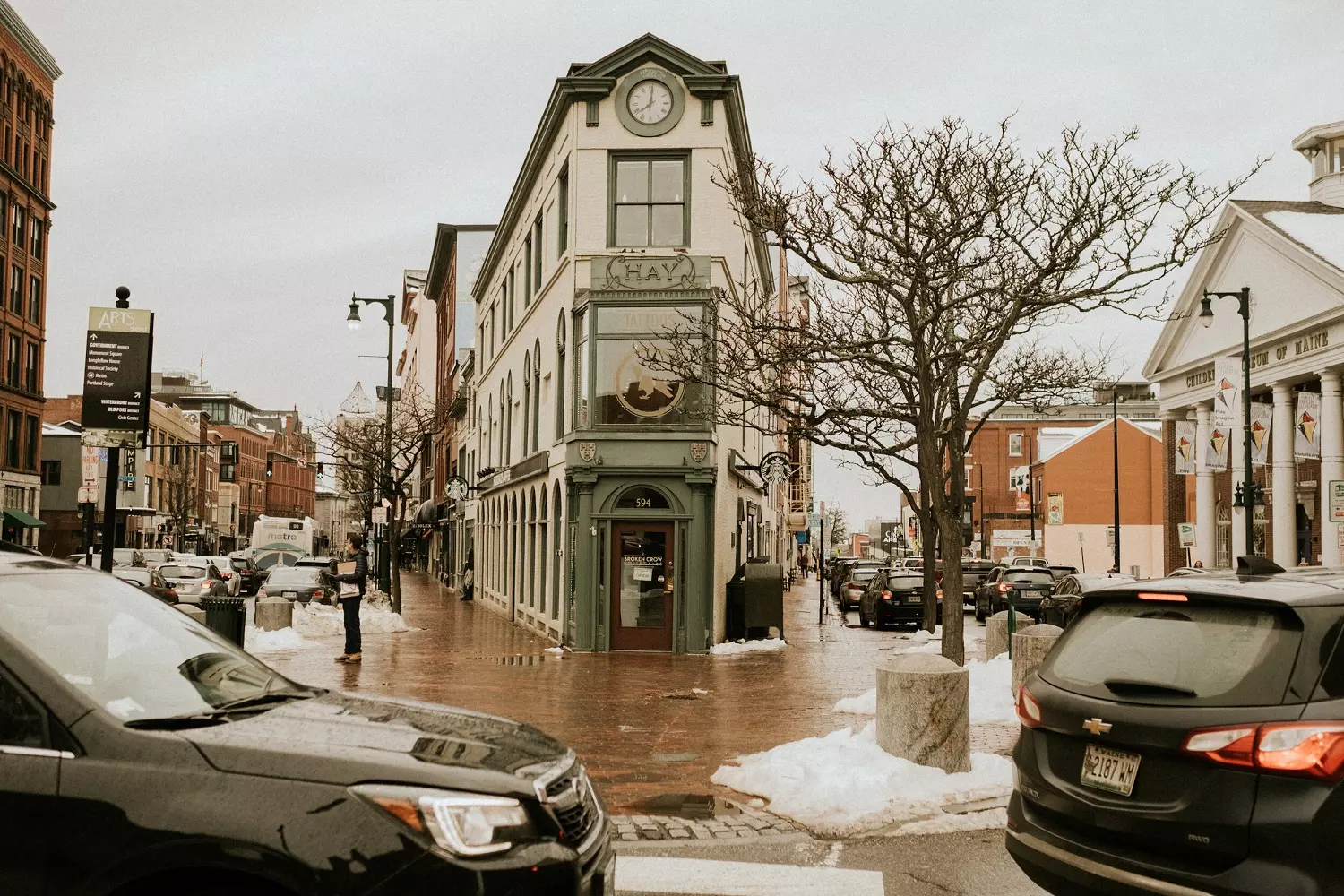
Nature and Scenic Routes
New England has it all — mountains, forests, ocean, and islands. Landscapes change with the seasons. In summer, the coast resembles a postcard with fishing boats and white lighthouses. In autumn, the forests are painted in vibrant colors. In winter, the snow-covered mountains attract skiers, and in spring, wild apple trees blossom on the hills.
White Mountains: Peaks and Panoramic Views
The mountain range in New Hampshire stretches for hundreds of miles. Scenic routes for hiking and driving are laid out here. The most famous road is the Kancamagus Highway. It passes through national forests, mountain passes, and rivers with waterfalls. The route is especially beautiful in autumn when the trees are covered in red, yellow, and orange leaves.
Maine Coast: Cliffs, Ocean, and Lighthouses
The coastline of Maine is dotted with bays, cliffs, and sandy beaches. Acadia National Park is located on Mount Desert Island. Here, you can climb Cadillac Mountain and watch the sun rise over the Atlantic. Ancient lighthouses line the coast, the most famous of which is Portland Head Light.
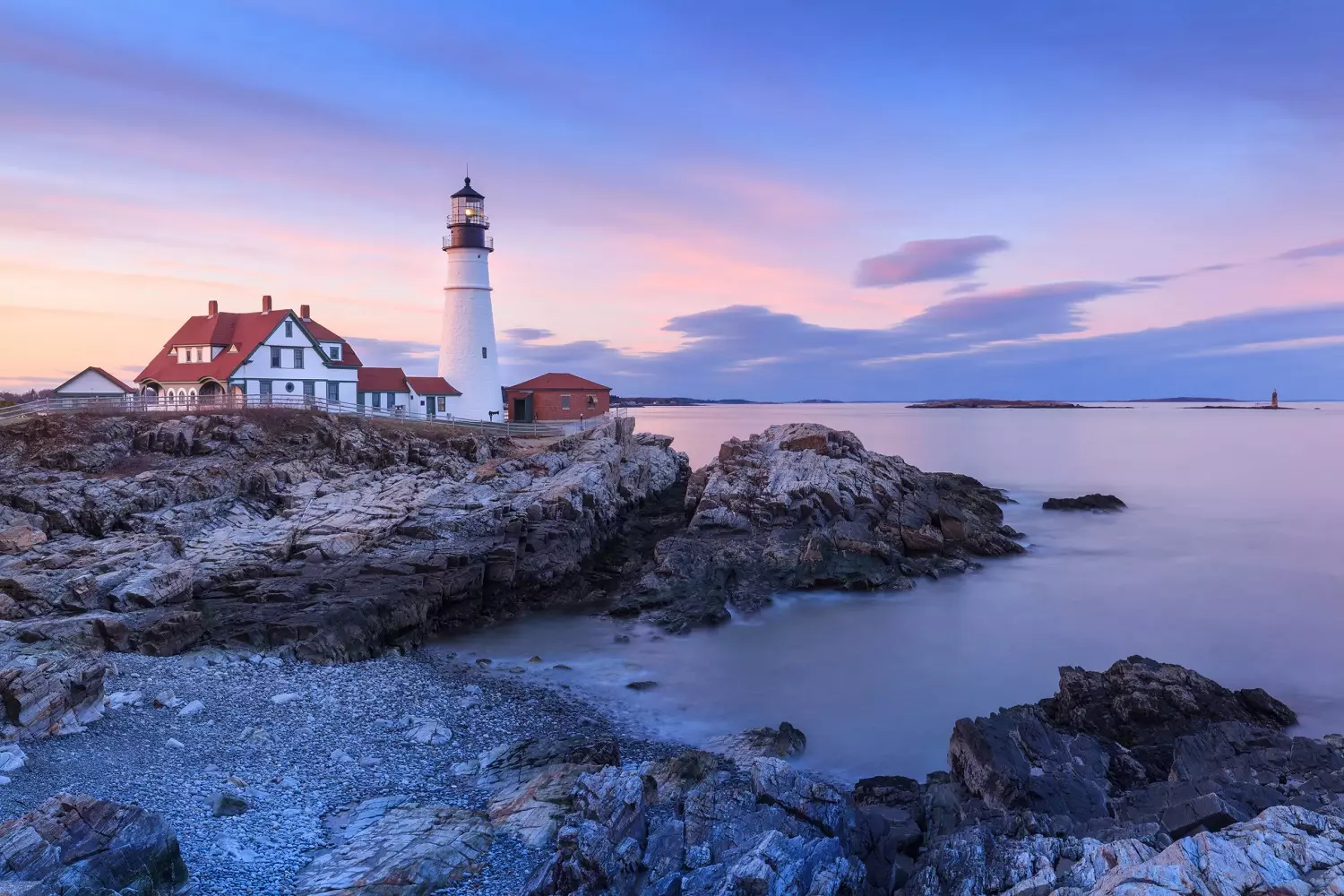
Islands and Sand Dunes of Cape Cod
Cape Cod is a peninsula in Massachusetts where miles of beaches coexist with pine groves and dunes. There are no large cities here, but there are many small fishing villages and quiet bays. Ferries lead to the islands of Nantucket and Martha's Vineyard, where the homes of the first colonists have been preserved.
Green Hills of Vermont
Vermont is known for its rural landscapes. Rolling hills, farms with red barns, and dense forests create a special atmosphere. Wooden covered bridges, which have become its symbol, are scattered throughout the state. In winter, people come here to ski, and in summer, they explore forest trails and small lakes.
Connecticut: Rivers and Old Estates
Connecticut combines hilly landscapes with cozy towns. Parks stretch along the Connecticut River, where it's pleasant to walk at any time of the year. In the interior of the state, you can see ancient estates surrounded by oak groves and fields.
New England's nature is diverse. In this region, you can spend a day in the mountains and find yourself on the ocean shore in the evening.
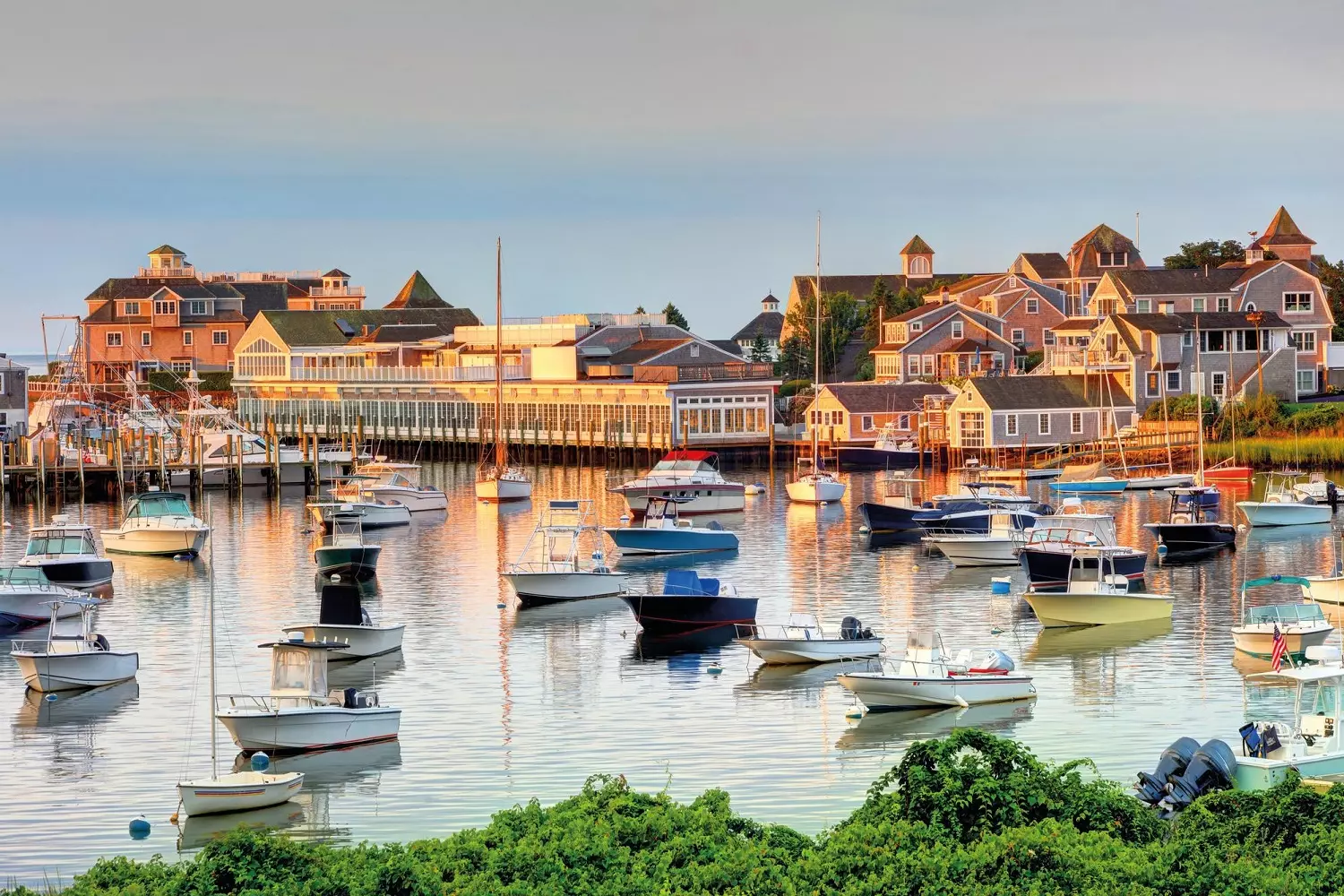
Maritime Traditions and Cuisine
New England is deeply connected to the sea. Fishing villages, old ports, regattas, and lighthouses along the coast remind us that the ocean has always been a part of this region's life. Lobster, mussel, and oyster fishing are well-developed here, and restaurant menus feature dishes prepared according to old recipes.
Fishing Settlements and Ports
Dozens of small villages are located on the coasts of Massachusetts, Rhode Island, and Maine, where you can still see old boats moored at wooden piers. Sailing regattas are held in Newport, and monuments to sailors who did not return from their voyages are erected in Gloucester. In these places, the ocean has always played a major role — from whaling in the 19th century to modern fishing fleets.
Legendary Maine Lobster
Maine is famous for its lobsters. They are served with butter and lemon, put in sandwiches, and cooked in soups. Many restaurants operate right on the coast — guests can choose a lobster from a large aquarium, and it will be cooked on the spot. Summer festivals feature boiled lobsters served in huge pots with potatoes and corn.
New England Clam Chowder
Clam chowder is a thick soup made with clams, potatoes, and cream. This dish appeared thanks to the first colonists, who adapted European recipes to local products. In Boston, it is prepared according to the classic recipe, and in Rhode Island, you can try a version with a clear broth without cream.
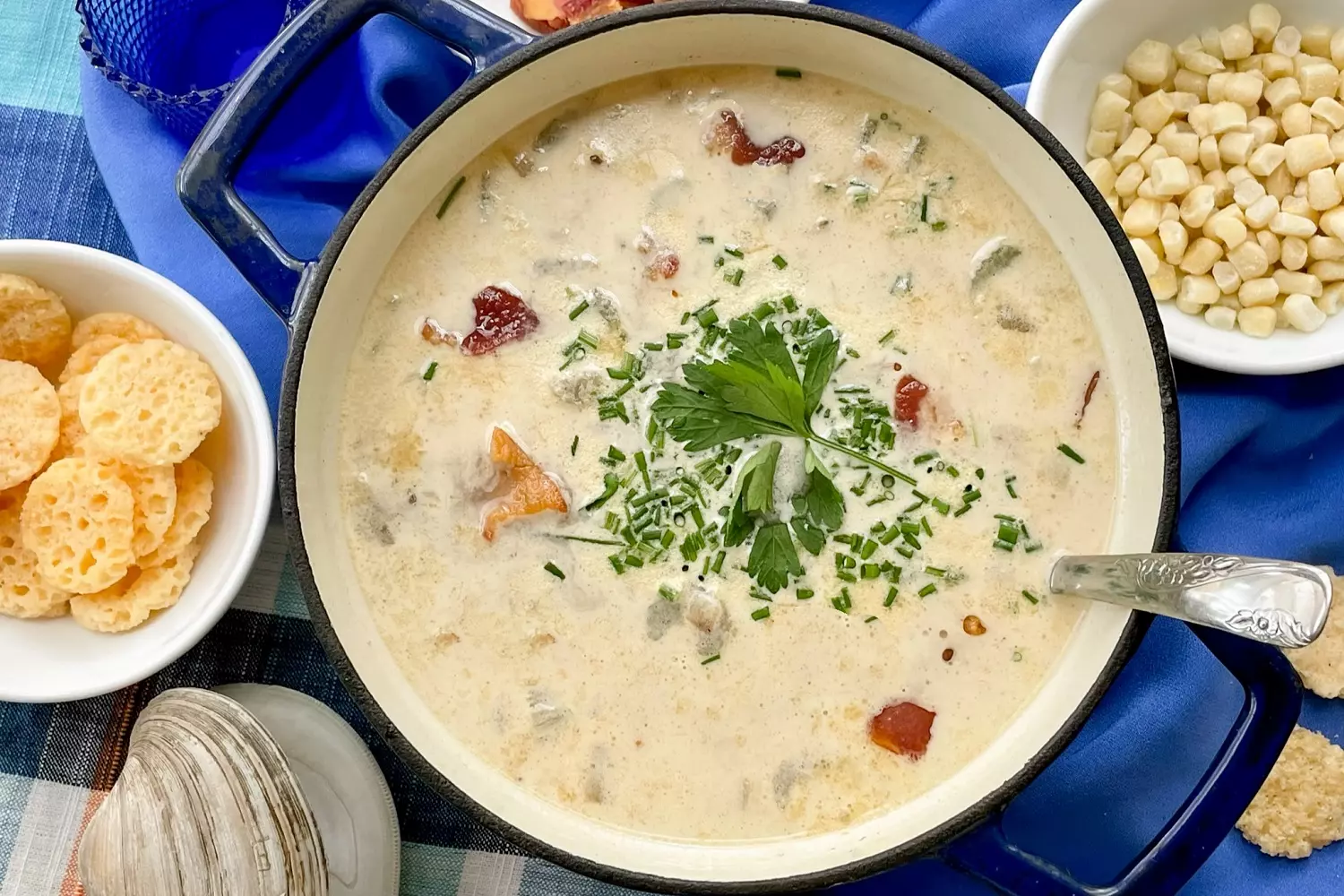
Fried Clams and Crabs
Markets and coastal cafes often sell fried mussels, oysters, and soft-shell crabs. They are rolled in cornmeal and deep-fried. This dish is convenient to take with you while walking along the beach or waterfront.
Cranberry Pies and Desserts
Massachusetts grows cranberries, which have become the basis for many desserts. They are added to pies, sauces, and jams. In October, during the harvest, you can see farmers flooding the fields so that the berries float to the surface of the water.
New England's culinary traditions have evolved over centuries. Simple dishes, where the main ingredients are fresh seafood and natural ingredients, are still valued here.
Why Americans Still Love Fast Food
Popular Resorts and Outdoor Recreation
New England has resorts for every season. In summer, tourists relax on the beaches of Cape Cod and the islands, and in winter, they go to Vermont to ski. Spring and autumn are especially beautiful, and many choose trips to national parks or country hotels by the water.
Cape Cod: Long Beaches and Fishing Villages
The Cape Cod peninsula in Massachusetts stretches along the Atlantic Ocean, forming dozens of sandy beaches and bays. There are no high-rise buildings here, but there are many old lighthouses, wooden cottages, and small ports. Bicycle routes are laid along the coast, and in the summer season, you can see whales during sea trips. The town of Provincetown has art galleries, cafes, and piers where fresh seafood is sold.
Nantucket and Martha's Vineyard Islands
The islands have preserved the atmosphere of the 19th century. Narrow streets, houses with wood trim, yachts in ports, and old churches make these places special. Nantucket was once a center of whaling, and now people come here for clean beaches and a relaxing holiday. Martha's Vineyard attracts tourists with landscapes and farmers' markets where local cheeses, fruits, and fresh pastries are sold.
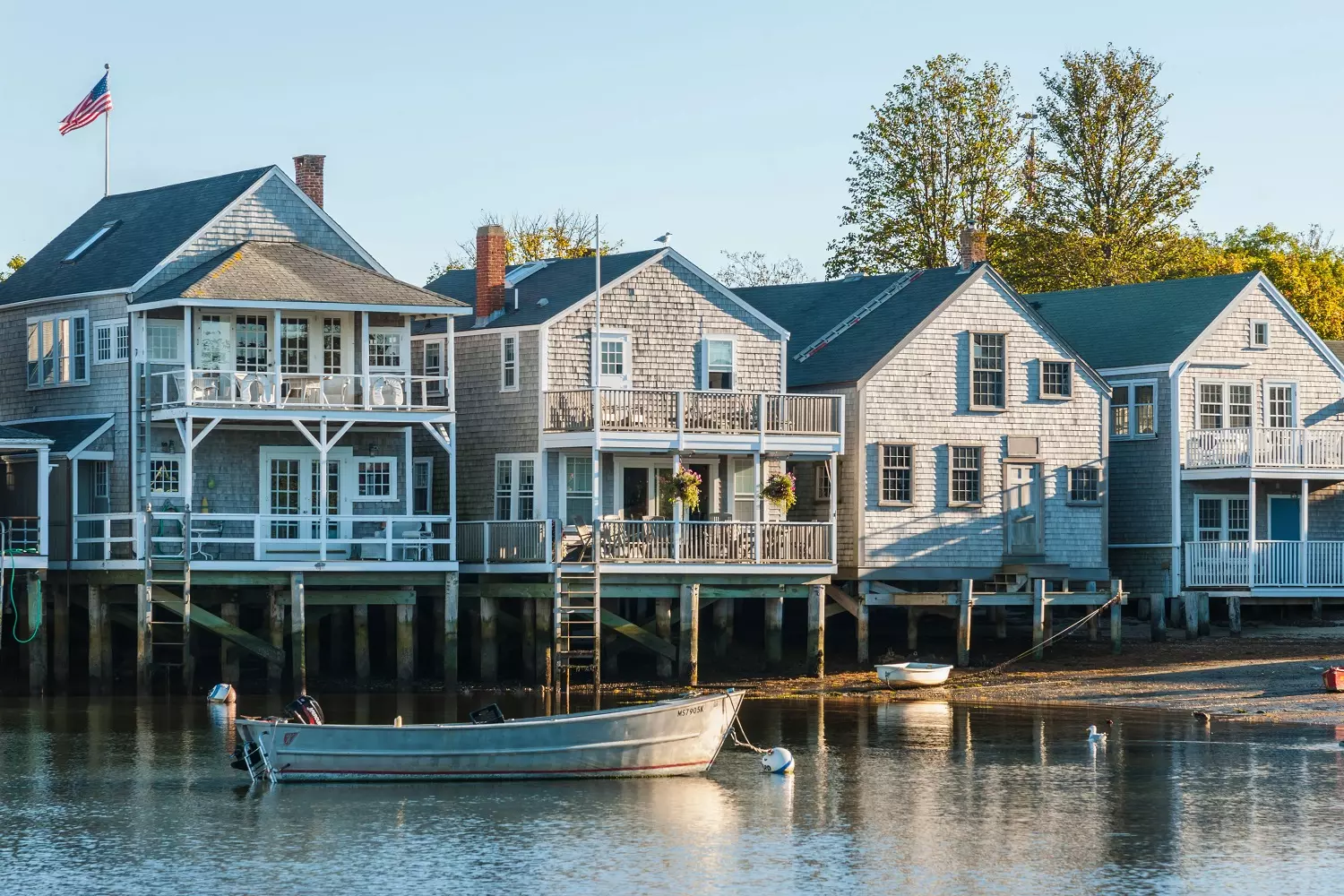
Vermont Ski Resorts
In winter, dozens of ski resorts open in Vermont. The most popular are Stowe, Killington, and Okemo. The slopes are suitable for both experienced skiers and those who are skiing for the first time. In the evenings, cozy houses with fireplaces, hot chocolate, and local restaurants with maple dishes create a special atmosphere. In spring, when the snow melts, people come here for walks in the forests and hills.
Lakes and Forests of New Hampshire
In the central part of New Hampshire is Lake Winnipesaukee, one of the largest in the region. Here you can rent a boat, go fishing, or just relax on the shore. In summer, hiking in the White Mountains is popular, where hundreds of kilometers of hiking trails are laid.
Maine Coast and Acadia
Acadia National Park on Mount Desert Island combines mountain landscapes with views of the Atlantic Ocean. The Park Loop Road passes through forests, rocks, and beaches. Along the coast, there are campsites and small hotels where those who want to spend time in nature come.
New England offers a variety of vacation options — from beaches and islands to mountain trails and ski resorts. At any time of the year, there are places worth visiting.
Cultural Heritage and Festivals
New England became the place where American history began. Old towns, museums, and universities have been preserved here, and traditional holidays still play an important role in the region's life.
- Historic Universities and Museums
New England is home to some of the oldest universities in the United States — Harvard, Yale, and Brown. They were founded in the 17th–18th centuries and influenced the development of science and culture in the country. Their libraries and museums house unique collections of books, paintings, and artifacts. In Boston, visit the Museum of Fine Arts, which houses works by American, European, and Asian masters, and at the Massachusetts Institute of Technology, there is a science museum with interactive exhibits. - Autumn and Harvest Festivals
Autumn in New England has always been a special time. The leaves of the trees change color, and apples, pumpkins, and cranberries are harvested on farms. In Massachusetts and Vermont, maple syrup festivals are held, where you can taste fresh sweets and see how it is extracted. In New Hampshire, autumn fairs are held with street food, rides, and craft exhibitions. - Christmas Fairs and Traditions
In winter, thousands of lights light up in the cities, and streets are decorated with garlands and wreaths. New England loves old Christmas traditions. In Newport and Boston, parades are held with orchestras, and in the villages of Vermont, fairs are held with handicrafts, hot cider, and carousels. In Plymouth, you can see how 17th-century colonists celebrated Christmas — in the historic village of Plimoth Patuxet, actors in period costumes show ancient rituals and hold festive dinners. - Music and Theater Festivals
In summer, many cultural events take place in New England. In Tanglewood (Massachusetts), open-air concerts are held where famous orchestras and jazz musicians perform. In Newport, the folk and jazz music festival is held annually, which was first held in the 1950s. Theater lovers go to Williamstown, where famous actors, directors, and playwrights gather.
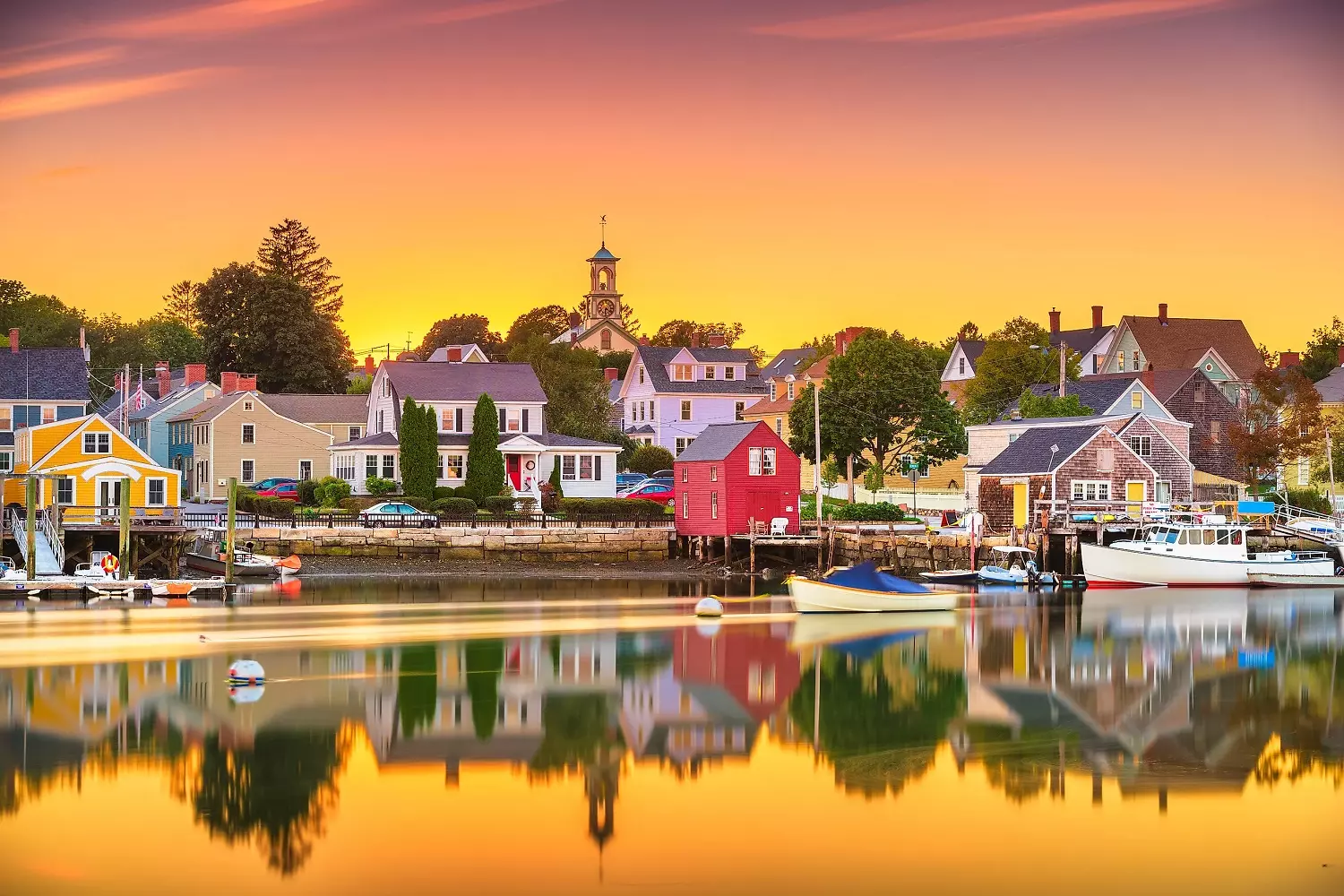
New England is a region with a rich past and living traditions. Old towns, universities, and cultural centers have been preserved here, but at the same time, it does not stand still. Each season brings new impressions — ski resorts open in winter, the hills of Vermont bloom in spring, coastal cities come to life in summer, and forests turn into a bright landscape in autumn. History, nature, and culture are closely intertwined here, creating an atmosphere that is difficult to find in other places.
























